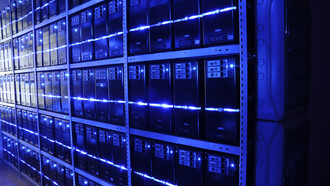New chapter for cupping therapy began in 2006. Oscar winning actress Gwyneth Paltrow decided to reveal her newly acquired cupping therapy marks at a film festival in New York by wearing a low-cut dress which showed the circular marks across her back and shoulders. Media across the globe gave extensive coverage to cupping therapy and speculated wildly about why she was having this treatment. It seems this act stimulated a healthy public debate in natural health and complementary medicine circles.
Similar reactions to cupping therapy turned decorated American swimmer Michael Phelps at first page news after winning gold at the 2016 Rio Olympic Games in Brazil. Everyone whispered about the purple dots on his body. Many public figures to date exposed themselves with red, black or purple dots on their bodies. Most of them are top notch athletes, such as World heavyweight boxing champion Anthony Joshua. Joshua took to Instagram to share a picture of himself undergoing cupping in preparation for Vladimir Klitchko mega-fight.
Today, more people seek complementary and alternative therapies to deal with their health problems. Public awareness and education have also changed, from seeing these as fake or unreliable remedies to more respectable alternative treatments. Alternative, Complementary and Integrative medicine education in developed world offer 3-4-5 years official University degrees, with optional studies in China. Many alternative therapy organizations have set up self-regulatory bodies, ensuring high educational standards and at the same time seeking better understanding and recognition by the health system and the general public.
It is well documented that cupping therapy taught and used properly on its own, or alongside various therapies, can positively influence and speed up the body’s natural healing process.
Nowadays glass cups are most commonly used in TCM hospitals in China. Glass cups have great tradition of usage. Glass was invented around 2500 BC by the Egyptians. Before glass cups were introduced, earthenware and china were used for several thousands years.
Modern Cupping Equipment and Methods
Most of the cupping equipment and methods used today are exactly the same as they were in ancient times. There are just a few differences, related to use of electronic, electrical or mechanized suction pumps. Interestingly enough, the majority of people practicing cupping today still use bamboo or glass cups. The small and versatile, manually operated valve pistol handle cupping set is the most popular version among practitioners outside China.
In most TCM hospitals in P.R. China, acupuncture departments have an electro-magnetic cupping machine. Electromagnetic stimulation increases the therapeutic effectiveness of cupping, especially when applied to joints, including the knees and elbows. For many Chinese home cupping users it is preferable to use cupping set made of rubber.
Gua Sha 刮痧 Scrapping
Gua Sha is a medical treatment very similar to cupping; it means to scrape or scratch. Gua Sha is used where pain, heat and stagnation are present. The treatment itself is very simple and pain free in practised hands. However, in untrained hands it can be rather uncomfortable and sometimes painful, especially when used on the bony parts of the body and on rather thinly built patients. Gua Sha is extremely effective in releasing the stagnation and restoring the flow of Blood and Qi to the area.
What are the benefits of Cupping therapy?
By TCM theory, Cupping regulates the flow of Qi and Blood. It helps to draw out and eliminate pathogenic factors such as Wind, Cold, Damp and Heat. Cupping also moves Qi and Blood and opens the pores of the skin, thus precipitating the removal of pathogens through the skin itself. From the very start of its application one can observe the blood moving in the direction of the cup. Where a patient’s energy is deficient this movement will be slow; if the energy is abundant it will be much quicker. One can actually observe this process if glass cups are used.
Objective of the cupping treatment is to remove the external pathogens from the body and restore the circulation of Qi, Blood and the Fluids, thus bringing health to the sick.
The effect of this therapy can be classified into two categories:
the general: purification of blood, improvement of circulatory functions of blood and lymph, regulation of automatic nervous system, etc.
the local: removal of pain, relaxation of stiff muscles, etc.
Purification of Blood
Among the general effects, the most important is the effect upon the circulatory system. Owing to the pull of low pressure, the flow of blood in the arteries and veins increases, although in the case of the latter, localized spots of congested blood appear and then disappear. It is possible to ease the interruption of blood circulation and congestion and to stop the inflammatory extravasation from the tissues. Therefore, facilitation of the flow of blood is the most important characteristic of this therapy. It is very beneficial for hardened arteries, stiff shoulders, etc.
Effects on the Nervous System
Cupping therapy stimulates the sensory nerves of the skin. The inhibitory effects on hypersensitive pain are not limited to the area of direct treatment, but include the areas controlled by the relevant nerves. Treatment on the back is mainly directed to the central line and the sympathetic nerves beside it. The stimulation of these has a good influence not only on the automatic nervous system itself but also on various organs under its control.
Cupping therapy is effective against general symptoms of unknown cause (by modern medicine approach) such as chronic headaches, dizziness, languor, stiff shoulders, fatigue, etc. Those symptoms can occur as result of greater dissbalances, such as anxiety, worry and particular pain. It is also effective against endogenous chronic diseases such as high blood pressure, neuralgia and rheumatism. The general and localized effects of this therapy strengthen the healing power against diseases and, together with a healthy diet and psychotherapy, cure or prevent disease completely.
Cupping therapy is suitable for the treatment of pain, arthritis, diseases of the digestive, circulatory and respiratory systems, some skin conditions such as eczema, facial paresis, weakness of the muscles, high blood pressure, common cold, etc.
What to Expect During and After Cupping Therapy?
By Traditional Chinese Medicine theory, the primary object of cupping therapy is to move Blood and Qi, remove Cold pathogens as well as Heat pathogens and eliminate stagnation of any kind from the body.
Almost without exception, in every case where cupping is performed for the first time there will be slight reddening or a ring mark caused by the edge of the cup at the site of the treatment. The extent of the cupping mark depends very much on the length of treatment time and the strength of the suction achieved. To reduce the risk of severe marking, it is advisable to start with empty, light or medium strength suction, increasing the strength and duration on subsequent visits to Cupping therapy practitioner.
We should experience a warm, pulling or stretching sensation on the skin, but not pain. If the patient complains of pain at any time during treatment, it is necessary to remove the cups immediately. The skin of some people is very sensitive and their pain threshold extremely low, especially children and the elderly.
Normally the ring or cupping mark will fade away within 10 days. Elderly and very young people are particularly susceptible to severe marking and blistering. This is another reason for monitoring the patient during treatment. If the blister is not noticed at an early stage, it may result in an unnecessary large, open wound.
During the cupping days or weeks, cupping users should refrain from eating rich and greasy foods. Light, warm meals in winter and salads in the summer are preferred. The fluid intake should also be increased at least 20% during this period which will help with the metabolism and the detoxification process. A warm feeling throughout the body, some perspiration and a sense of relaxation normally follow the treatment due to improved circulation and muscle relaxation. Should you feel cold, shivery or extremely tired after the treatment, a warm drink and up to 30 minutes of rest are highly recommended before leaving the clinic.
Like many other therapies, cupping therapy isn’t a silver bullet for all diseases. The full benefits of this therapy are usually achieved after between 5 and 10 visits. Sometimes the benefits are noticed immediately but short lived, in particular when dealing with emotional complaints or long-standing musculoskeletal problems. Ten sessions are considered as one course of treatment. Patients under 16 years of age normally require less treatment.
Methods of Cupping Therapy
There are many methods of cupping therapy. It is considered to have about 11 commonly used methods of cupping with different functional purpose or aim to produce such as:
Light cupping, Medium cupping, Strong cupping, Moving cupping, Light-moving cupping, Needle cupping Moxa cupping, Flash cupping Shan Guan Fa, Bleeding/Wet cupping Xue Guan Fa, Herbal cupping Yao Guan Fa and Water cupping.
Precautions and Contraindications
Cupping therapy in general is very safe and has no side effects. There are a few exceptions, however, and when these are observed the implementation is safe and the benefits are generous. Cupping is contraindicated on an empty stomach, particularly during the long fasting periods and in people suspected of hemorrhage of any kind.
Do not employ cupping therapy over the eyes, sunburn or burns in general, open wounds or a recent trauma. During pregnancy avoid cupping to the lower and upper abdomen; the lower back can be cupped until the sixth month of pregnancy, using light or medium cupping methods only.















